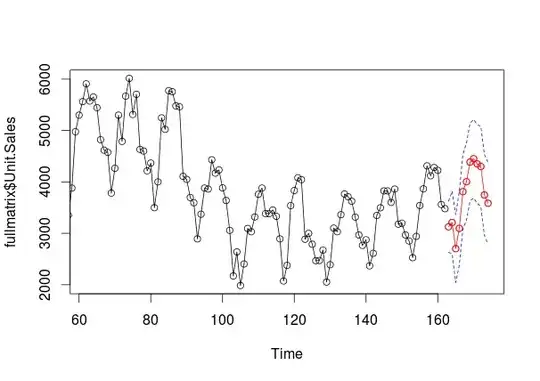I have two conditions, A and B (see the figure below).
I want to test if these conditions are different each other, if condition A is different from 0 and if condition B is different from 0.
I'd like to accomplish this task using a linear mixed model, because I want to consider random effects.
This is my model:
lm<-lmer(x~conditionr +(1|block) + (1|subj) , data=data, REML = FALSE)
This is the output:
Estimate Std. Error df t value Pr(>|t|)
(Intercept) -0.08554 0.01745 4.00000 -4.903 0.00781 **
B 0.18395 0.03456 1002.70000 5.323 1.26e-07 ***
So, I found a difference between A and B. A (Intercept) is different from 0.
However, I don't know: 1) how to test if B is different from zero. 2) is it possible that the df of intercept is 4? it sounds a bit strange for me..
Thanks in advance BR
